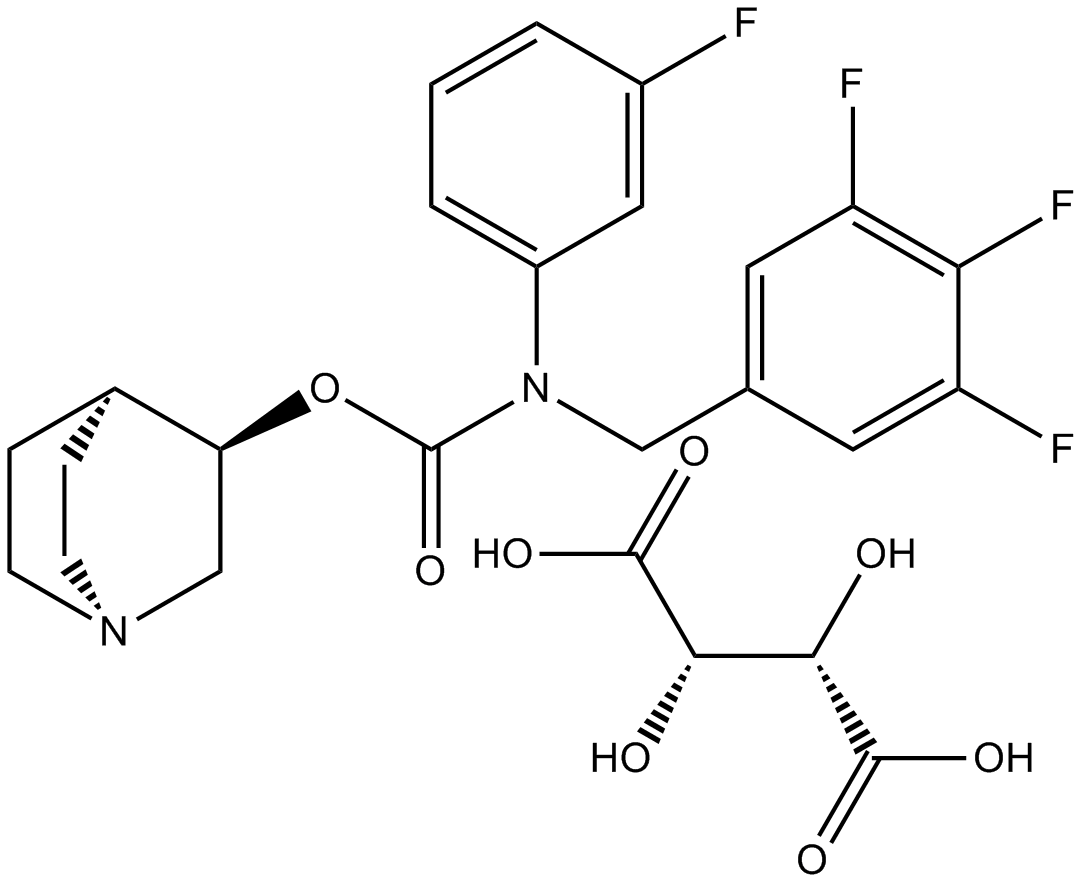Tarafenacin D-tartrate (Synonyms: SVT-40776 D-tartrate) |
| Katalog-Nr.GC16059 |
Tarafenacin D-Tartrat (SVT-40776 D-Tartrat) ist ein hochselektiver M3-Muskarinrezeptor-Antagonist (Ki = 0,19 nM), ~200-fache SelektivitÄt gegenÜber dem M2-Rezeptor.
Products are for research use only. Not for human use. We do not sell to patients.

Cas No.: 1159101-48-0
Sample solution is provided at 25 µL, 10mM.
Tarafenacin D-tartrate (SVT-40776 D-tartrate) is a highly selective M3 muscarinic receptor antagonist (Ki= 0.19 nM), ~200 fold selectivity over M2 receptor.IC50 value: 0.19 nM (Ki) [1]Target: M3 muscarinic receptorin vitro: SVT-40776 is highly selective for M(3) over M(2) receptors (Ki = 0.19 nmol.L(-1) for M(3) receptor affinity). SVT-40776 was the most potent in inhibiting carbachol-induced bladder contractions of the anti-cholinergic agents tested, without affecting atrial contractions over the same range of concentrations. SVT-40776 exhibited the highest urinary versus cardiac selectivity (199-fold) [1]. SVT-40776 has a much higher binding affinity (K(d) = 0.4 nM) to M5 mAChR than that of solifenacin (K(d) = 31 nM) with the same reeptor. The calculated binding free energy change (-2.3 ± 0.3 kcal/mol) from solifenacin to SVT-40776 is in good agreement with the experimentally derived binding free energy change (-2.58 kcal/mol), suggesting that our modeled M5 mAChR structure and its complexes with the antagonists are reliable [2].in vivo: In the guinea pig in vivo model, SVT-40776 inhibited 25% of spontaneous bladder contractions at a very low dose (6.97 microg.kg(-1) i.v), without affecting arterial blood pressure [1].
References:
[1]. Salcedo C, et al. In vivo and in vitro pharmacological characterization of SVT-40776, a novel M3 muscarinic receptor antagonist, for the treatment of overactive bladder. Br J Pharmacol. 2009 Mar;156(5):807-17.
[2]. Huang X, et al. Microscopic binding of M5 muscarinic acetylcholine receptor with antagonists by homology modeling, molecular docking, and molecular dynamics simulation. J Phys Chem B. 2012 Jan 12;116(1):532-41.
Average Rating: 5 (Based on Reviews and 21 reference(s) in Google Scholar.)
GLPBIO products are for RESEARCH USE ONLY. Please make sure your review or question is research based.
Required fields are marked with *




















